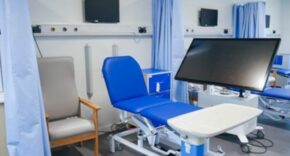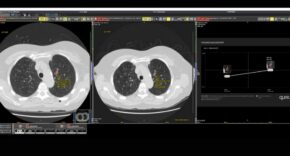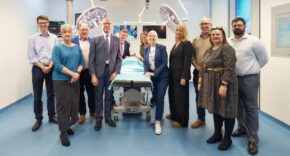
This spring, Labour plans to unveil its 10-year NHS strategy, focusing on illness prevention, local care, and digital transformation. It promises to be a defining moment shaping both the future of our publicly funded health service and the party who founded it.
While Wes Streeting prioritises cutting waiting times, implementing digital tech and drawing on the private sector to innovate the service, the NHS also has ambitious sustainability targets – aiming to become the first net-zero national health service by 2040 and targeting an 80% reduction in its emissions under its direct control by 2028 to 2032.
As the Government and health minister navigate these tests, sustainable IT can play a vital role in the future of the NHS.
Devices show direction of travel
The NHS has already begun to investigate the reuse and remanufacturing of medical devices to save money and help tackle its large waste footprint. The health service currently produces about 156,000 tons of clinical waste each year, equivalent to over 400 jumbo jets.
Leeds Teaching Hospitals Trust improved its finances by £100,000 by buying remanufactured catheters and selling used devices. According to the Government’s NHS waste crackdown, scaling this across the UK could save the NHS millions of pounds annually on catheters used for heart tests alone. Meanwhile, the reuse of walking aids has also brought substantial carbon savings.
If two out of every five walking aids were returned, a typical UK hospital could save nearly £50,000 a year. Reusing a refurbished walking aid also reduces carbon emissions by 98% compared with manufacturing a new model. Boosting the return rate over the next three years could cut carbon emissions by 7,400 tonnes, equivalent to about 300,000 car trips between London and Bristol.
Medical tools, however, are just the tip of the iceberg. The NHS is responsible for 4% of England’s total carbon footprint, so it must explore all avenues to bring a net-zero future for itself and the UK.
Second-life tech must take its place
While the NHS has implemented the reuse of devices, its IT estate is a largely untouched asset with the potential to shift the dial on sustainability.
Over the years, health trusts have spent huge amounts on their IT equipment and consistently favoured brand-new devices rather than extending device lifecycles and using remanufactured models. According to data from Freedom of Information requests, NHS Trusts spent £260m on 401,084 new PCs, at an average cost of £650.54 a box from 2013 to 2017. Fast forward to 2020 to 2021, and according to Oxygen Finance, £3.24 billion was spent on ICT-related services, a 33% increase from 2019 to 2020. Last October’s budget saw more than £2 billion announced in funding for NHS technology and digital transformation in 2025/26.
While digital transformation will help heal some of the NHS’s wounds, a new-at-all-costs tech procurement policy will open new ones.
Each laptop purchased by an NHS trust typically costs between £500 and £1,000, generating an average of about 331kg carbon emissions, due to the intense production phase of new equipment. This significantly impacts the service’s budget and sustainability goals.
Adopting the reuse model that we’ve seen for medical devices for tech procurement could save the NHS billions with no impact on performance. Remanufactured laptops, for example, cost 40% less than new models and are guaranteed by the BSI Kitemark to perform “equal to or better than new”. They are a compelling option as Streeting plans the future of the health service.
Ahead of the NHS 10-year strategy, the proof of second-life tech is already out there. A third (35%) of the UK ambulance service in England has been supplied with remanufactured devices from Circular Computing, while the King’s College Hospital Foundation Trust’s recent adoption of this hardware helped it cut 126.4 tons of carbon emissions as well as saving 76 million litres of water over an 18-month period.
As the Government looks to safeguard the NHS, addressing its sustainability goals while delivering value for money, second-life IT is the ace up Wes Streeting’s sleeve. There can be no excuse for not playing it.












